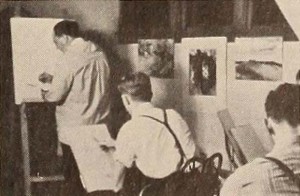
"Builders of Tomorrow, produced by the Cinema Laboratory of Western Reserve University and filmed by Dr. James E. Bliss, takes one into the Cleveland School of Architecture at Western Reserve and shows the embryonic architects at work. The students are pictured studying the principles of design, drafting and in art classes. Architectural models are expertly filmed and with lighting and treatment that, in several cases, make them indistinguishable from actual structures and streets. The entire picture is interior color and the lighting is ably handled throughout." Movie Makers, Dec. 1938, 621.
"The construction of the POM (Pride of Montreal) Bakery in Montreal. Some commercial harvesting footage with baking at POM." (LAC description)
"Family members look on as mill men build an archway in the garden at Greenbank, Keswick. General outdoor scenes with flowerbeds and a swing." (NWFA Online Database)
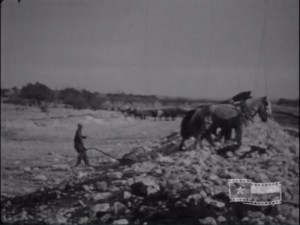
"Produced in the late 1920s, this amateur film documents the construction of the Santa Fe Railway extension connecting San Angelo and Sonora. In 1928, the Atchison, Topeka and Santa Fe Railway Company (Santa Fe) purchased the Kansas City, Mexico and Orient Railway Company of Texas (Orient of Texas). In so doing, they also acquired the company’s system of track lines, 465 miles of which were in Texas. As a subsidiary of Santa Fe, Orient of Texas then began construction on a pair of extension lines: one spanning the 72 miles from Paisano to Presidio and another the 65 miles from San Angelo to Sonora. This amateur film captures early construction on the second, with a small crew using work horses to clear the route and build bridges. The San Angelo-Sonora line was completed on July 1, 1930. Santa Fe abandoned the line in 1976" Texas Archive of the Moving Image.
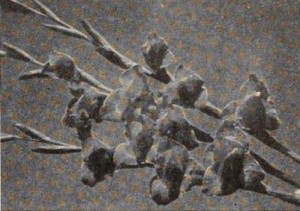
"Bulbs and Beauty reveals in painstaking detail the planting, cultivating and harvesting of gladioli in the vast fields surrounding the town of Momence in the state of Illinois. In this elaborate undertaking, Haven Trecker unfolds in well planned and profusely close-upped sequences the many colorful aspects of this popular plant in the life of flower-loving America. The harvesting sequence is followed by somewhat generous footage of a flower festival, the big annual affair in glad-minded Momence; and the festival in turn is followed by a seemingly endless parade in tribute to these bounteous blossoms. Bulbs and Beauty, accompanied agreeably by magnetic sound on film, appears to have been made for informative and record purposes. It fulfills these functions in a lively and competent manner." Movie Makers, Dec. 1952, 337, 339.
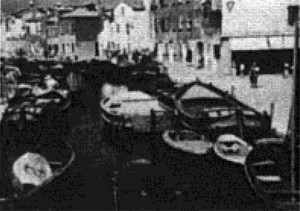
"Burano by the sea, fisherman mending their nets, life along and on the canal. A visit with times of old, fine embroidery, the cobbler, children quietly at play, the market, the village square and its grand architecture and bronze statuary. It is feeding time in the square for a zillion pigeons. Another gem of Esther's visits to Europe" PSA Journal, Nov. 1960, 41.
"will probably be an all-women film produced by the lady members, stories for which are now under consideration" (HMHT July 1933: 77).
"an adaptation of an old song… and is now underway" (HMHT Aug 1933: 113).
"an object lesson of effective simplicity in telling a story" (HMHT Dec 1933: 283).
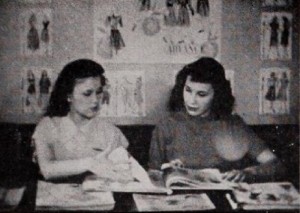
"One of the most unusual educational institutions in America, the John Hay High School, of Cleveland, Ohio, is devoted exclusively to courses that adapt the student to life in a business civilization. Business Champions, produced for the school by Anthony L. Cope, a John Hay instructor, provides fine coverage of all the school's activities. With the end product — a well adjusted citizen with a job — constantly in mind, Mr. Cope shows fully and intelligently how John Hay determines and develops the aptitudes of its students." Movie Makers, Dec. 1948, 492.
"Charles J. Ross found in Victoria, a land of generous rainfall and benign sunshine, where walks and pathways are lined with trees and flowers from distant places, where every path leads the visitor to new scenes of verdure and color; he is entranced and delighted at every turn. The imagination and planning of the landscape artists is his to enjoy without surfeit, so tasteful are their arrangements" PSA Journal, Nov. 1958, 46.
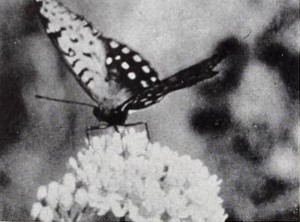
"The late and unlamented war kept amateur movie makers — along with the rest of peripatetic America — pretty close to their backyards. Robert S. Walker is one who has made this restriction pay dividends. The result is Butterflies, a charming study of these winged wanderers of blossomland. Those filmers who have ventured into the field of extreme closeup work will understand and applaud the patient skill with which Mr. Walker got wellnigh perfect results in recording each new specimen. Rhymed quatrains serve, with the scenes, to create a film of light and airy entertainment." Movie Makers, Dec. 1945, 496.
Total Pages: 203